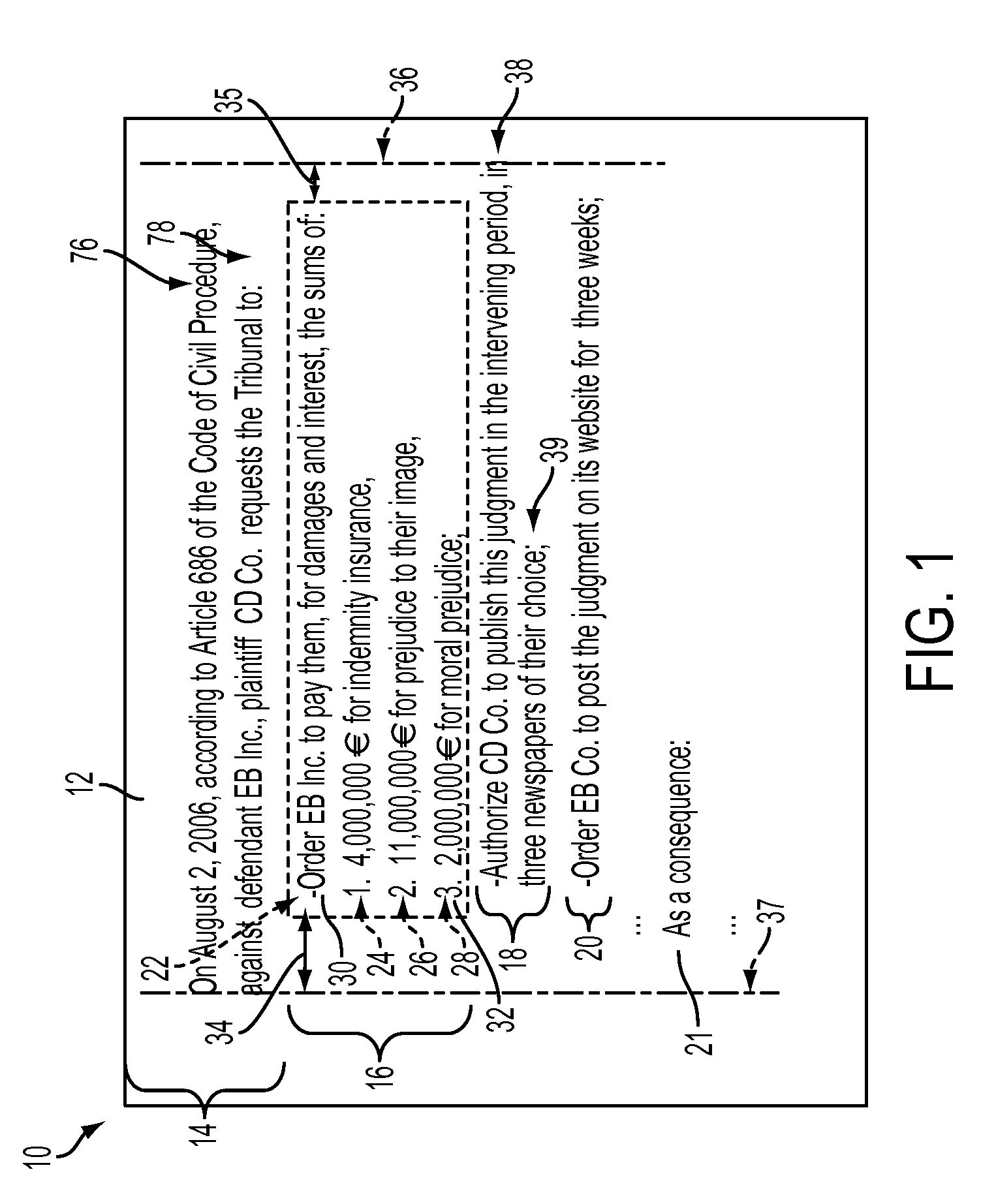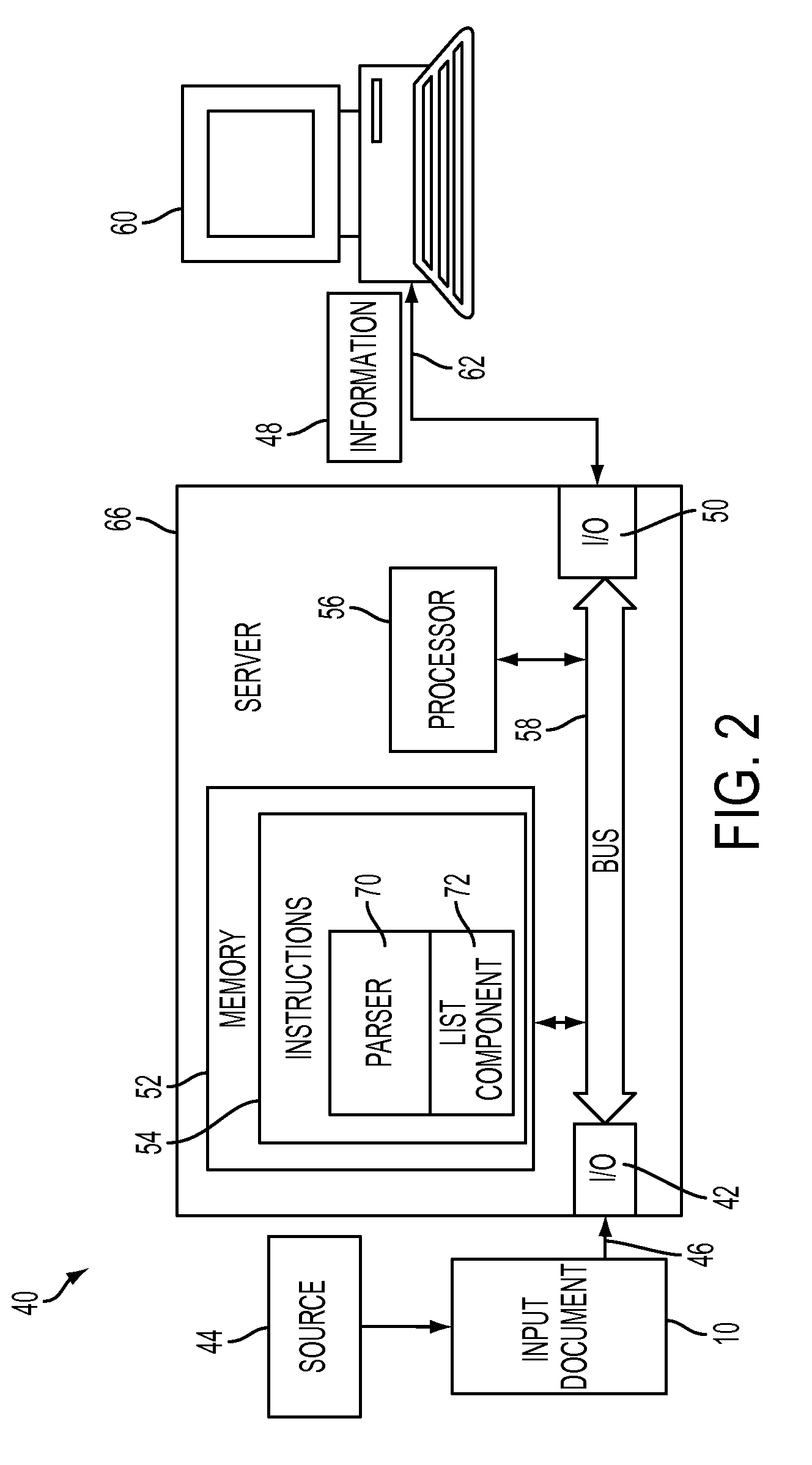Parsing of text using linguistic and non-linguistic list properties
a text and list property technology, applied in the field of natural language processing, can solve the problems of ambiguity, existing parsers have difficulties, and the robust parser is designed to process only regular, continuous texts
- Summary
- Abstract
- Description
- Claims
- Application Information
AI Technical Summary
Benefits of technology
Problems solved by technology
Method used
Image
Examples
Embodiment Construction
[0021]Aspects of the exemplary embodiment relate to a system and method for extracting information from lists in natural language text.
[0022]A list can be considered as including a plurality of list constituents including a “list introduction,” which precedes and is syntactically related to a set of two or more “list items.” Each list item may be denoted by a “list item label,” comprising one or more tokens, such as a letter, number, hyphen, or the like, although this is not required. List items can have one or more layout features representing the geometric structure of the text, such as indents, although again this is not required. A list can include many list items and span over several pages. A list can contain sub-lists, each of which has the properties of a list. A list may also contain one or more list item modifiers, each of which links subsequent list items to the list introduction, without being a continuation or sub-list of a previous list. A list can be graphically repre...
PUM
 Login to View More
Login to View More Abstract
Description
Claims
Application Information
 Login to View More
Login to View More - R&D
- Intellectual Property
- Life Sciences
- Materials
- Tech Scout
- Unparalleled Data Quality
- Higher Quality Content
- 60% Fewer Hallucinations
Browse by: Latest US Patents, China's latest patents, Technical Efficacy Thesaurus, Application Domain, Technology Topic, Popular Technical Reports.
© 2025 PatSnap. All rights reserved.Legal|Privacy policy|Modern Slavery Act Transparency Statement|Sitemap|About US| Contact US: help@patsnap.com



